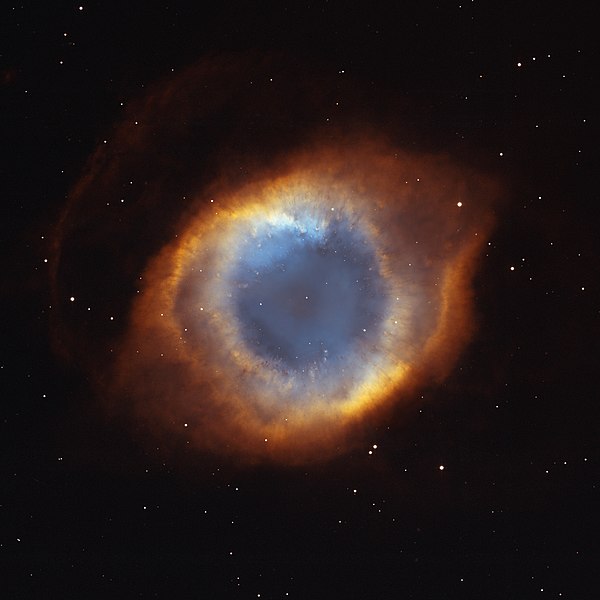File:Iridescent Glory of Nearby Helix Nebula.jpg

Dimensioni di questa anteprima: 600 × 600 pixel. Altre risoluzioni: 240 × 240 pixel | 480 × 480 pixel | 768 × 768 pixel | 1 024 × 1 024 pixel | 2 048 × 2 048 pixel | 16 000 × 16 000 pixel.
File originale (16 000 × 16 000 pixel, dimensione del file: 246,9 MB, tipo MIME: image/jpeg)
Cronologia del file
Fare clic su un gruppo data/ora per vedere il file come si presentava nel momento indicato.
| Data/Ora | Miniatura | Dimensioni | Utente | Commento | |
|---|---|---|---|---|---|
| attuale | 18:05, 29 gen 2012 |  | 16 000 × 16 000 (246,9 MB) | Reedy | Importing image file |
| 12:50, 12 mag 2010 |  | 16 000 × 16 000 (37,15 MB) | Tryphon | Better quality. | |
| 17:59, 13 mag 2008 |  | 16 000 × 16 000 (8,62 MB) | とある白い猫 | {{Information |Description=In one of the largest and most detailed celestial images ever made, the coil-shaped Helix Nebula is being unveiled tomorrow in celebration of Astronomy Day (Saturday, May 10). The composite picture is a seamless blend of ultra- |
Utilizzo del file
La seguente pagina usa questo file:
Utilizzo globale del file
Anche i seguenti wiki usano questo file:
- Usato nelle seguenti pagine di ar.wikipedia.org:
- Usato nelle seguenti pagine di cs.wikipedia.org:
- Usato nelle seguenti pagine di cy.wikipedia.org:
- Usato nelle seguenti pagine di en.wikipedia.org:
- Usato nelle seguenti pagine di fr.wikipedia.org:
- Usato nelle seguenti pagine di hi.wikipedia.org:
- Usato nelle seguenti pagine di ja.wikipedia.org:
- Usato nelle seguenti pagine di ko.wikipedia.org:
- Usato nelle seguenti pagine di ro.wikipedia.org:
- Usato nelle seguenti pagine di tr.wikipedia.org:
- Helis Bulutsusu
- Vikipedi:Seçkin resim adayları/Iridescent Glory of Nearby Helix Nebula.jpg
- Vikipedi:Seçkin resim adayları/Arşiv/Mart 2013
- Vikipedi:Günün seçkin resmi/Temmuz 2013
- Şablon:GSR/2013-07-10
- Vikipedi:Seçkin resimler/Ana sayfaya çıkmış resimler/2013 listesi
- Vikipedi:Seçkin resimler/Uzay/Uzaya bakış
- Şablon:GSR/2017-07-21
- Vikipedi:Günün seçkin resmi/Temmuz 2017
- Vikipedi:Günün seçkin resmi/Temmuz 2023
- Şablon:GSR/2023-07-17










